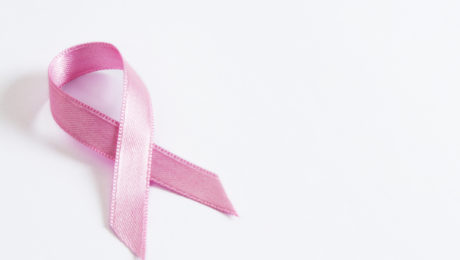Breast Cancer Awareness Month 2019
Breast cancer … it’s a scary thought and all too many women assume that it won’t happen to them. Fact is though, every ten minutes a woman is diagnosed with breast cancer. So, don’t be ignorant, during breast cancer awareness month 2019 go for a medical checkup, it might save your life.
Early signs of breast cancer can be a lump in a breast, a painful breast or armpit, or a discharge from the nipple. Even if none of these symptoms present themselves, a doctor should be visited to be sure. A doctor will most likely perform a manual exam and send you for a mammogram. A mammogram examination is painless and only takes about ten minutes.
If any of these symptoms do present themselves there’s no need to panic. Plenty of time, pain or a lump in a breast can be perfectly harmless. The pain can be a sign of a cyst or the lump can be benign. It’s always better to be sure though.
If you’ve never had a mammogram, make an appointment during breast cancer awareness month 2019. You can take a friend or family member with you and afterward you’ll have peace of mind.
- Published in News
Diet and Physical Activity: What’s the Cancer Connection?
How much do daily habits like diet and exercise affect your risk for cancer? Much more than you might think. Research has shown that poor diet and not being active are 2 key factors that can increase a person’s cancer risk. The good news is that you can do something about this.
Besides quitting smoking, some of the most important things you can do to help reduce your cancer risk are:
- Get to and stay at a healthy weight throughout life.
- Be physically active on a regular basis.
- Make healthy food choices with a focus on plant-based foods.
The evidence for this is strong. The World Cancer Research Fund estimates that about 20% of all cancers diagnosed in the US are related to body fatness, physical inactivity, excess alcohol consumption, and/or poor nutrition, and thus could be prevented.
Control your weight.
Getting to and staying at a healthy weight is important to reduce the risk of cancer and other chronic diseases, such as heart disease and diabetes. Being overweight or obese increases the risk of several cancers, including those of the breast (in women past menopause), colon and rectum, endometrium (the lining of the uterus), esophagus, pancreas, and kidney, among others.
Being overweight can increase cancer risk in many ways. One of the main ways is that excess weight causes the body to produce and circulate more estrogen and insulin, hormones that can stimulate cancer growth.
What’s a healthy weight?
One of the best ways to get an idea if you are at a healthy weight is to check your Body Mass Index (BMI), a score based on the relationship between your height and weight. Use our easy online BMI calculator to find out your score.
To reduce cancer risk, most people need to keep their BMIs below 25. Ask your doctor what your BMI number means and what action (if any) you should take.
If you are trying to control your weight, a good first step is to watch portion sizes, especially of foods high in calories, fat, and added sugars. Also try to limit your intake of high-calorie foods and drinks. Try writing down what and how much you eat and drink for a week, then see where you can cut down on portion sizes, cut back on some not-so-healthy foods and drinks, or both!
For those who are overweight or obese, losing even a small amount of weight has health benefits and is a good place to start.
Be more active.
Watching how much you eat will help you control your weight. The other key is to be more physically active. Being active helps reduce your cancer risk by helping with weight control. It can also help improve your hormone levels and the way your immune system works.
More good news – physical activity helps you reduce your risk of heart disease and diabetes, too! So grab your athletic shoes and head out the door!
The latest recommendations for adults call for at least 150 minutes of moderate intensity or 75 minutes of vigorous intensity activity each week, or an equivalent combination, preferably spread throughout the week. This is over and above usual daily activities like using the stairs instead of the elevator at your office or doing housework. For kids, the recommendation is at least 60 minutes of moderate or vigorous intensity activity each day, with vigorous intensity activity occurring at least 3 days each week.
Moderate activities are those that make you breathe as hard as you would during a brisk walk. This includes things like walking, biking, even housework and gardening. Vigorous activities make you use large muscle groups and make your heart beat faster, make you breathe faster and deeper, and also make you sweat.
It’s also important to limit sedentary behavior such as sitting, lying down, watching television, or other forms of screen-based entertainment.
Being more physically active than usual, no matter what your level of activity, can have many health benefits.
Eat healthy foods.
Eating well is an important part of improving your health and reducing your cancer risk. Take a good hard look at what you typically eat each day and try these tips to build a healthy diet plan for yourself and your family:
Choose foods and drinks in amounts that help you get to and maintain a healthy weight.
- Read food labels to become more aware of portion sizes and calories. Be aware that “low-fat” or “non-fat” does not necessarily mean “low-calorie.”
- Eat smaller portions when eating high-calorie foods.
- Choose vegetables, whole fruit, legumes such as peas and beans, and other low-calorie foods instead of calorie-dense foods such as French fries, potato and other chips, ice cream, donuts, and other sweets.
- Limit your intake of sugar-sweetened beverages such as soft drinks, sports drinks, and fruit-flavored drinks.
- When you eat away from home, be especially mindful to choose food low in calories, fat, and added sugar, and avoid eating large portion sizes.
Limit how much processed meat and red meat you eat.
- Minimize your intake of processed meats such as bacon, sausage, lunch meats, and hot dogs.
- Choose fish, poultry, or beans instead of red meat (beef, pork, and lamb).
- If you eat red meat, choose lean cuts and eat smaller portions.
- Prepare meat, poultry, and fish by baking, broiling, or poaching rather than by frying or charbroiling.
Eat at least 2½ cups of vegetables and fruits each day.
- Include vegetables and fruits at every meal and snack.
- Eat a variety of vegetables and fruits each day.
- Emphasize whole fruits and vegetables; choose 100% juice if you drink vegetable or fruit juices.
- Limit your use of creamy sauces, dressings, and dips with fruits and vegetables.
Choose whole grains instead of refined grain products.
- Choose whole-grain breads, pasta, and cereals (such as barley and oats) instead of breads, cereals, and pasta made from refined grains, and brown rice instead of white rice.
- Limit your intake of refined carbohydrate foods, including pastries, candy, sugar-sweetened breakfast cereals, and other high-sugar foods.
If you drink alcohol, limit how much
People who drink alcohol should limit their intake to no more than 2 drinks per day for men and 1 drink per day for women. The recommended limit is lower for women because of their smaller body size and slower breakdown of alcohol.
A drink of alcohol is defined as 12 ounces of beer, 5 ounces of wine, or 1½ ounces of 80-proof distilled spirits (hard liquor). In terms of cancer risk, it is the amount of alcohol, not the type of alcoholic drink that is important.
These daily limits do not mean it’s safe to drink larger amounts on fewer days of the week, since this can lead to health, social, and other problems.
Reducing cancer risk in our communities
Adopting a healthier lifestyle is easier for people who live, work, play, or go to school in an environment that supports healthy behaviors. Working together, communities can create the type of environment where healthy choices are easy to make.
We all can be part of these changes: Let’s ask for healthier food choices at our workplaces and schools. For every junk food item in the vending machine, ask for a healthy option, too. Support restaurants that help you to eat well by offering options like smaller portions, lower-calorie items, and whole-grain products. And let’s help make our communities safer and more appealing places to walk, bike, and be active.
The bottom line
Let’s challenge ourselves to lose some extra pounds, increase our physical activity, make healthy food choices, limit alcohol, and look for ways to make our communities healthier places to live, work, and play.
- Published in News
- 1
- 2



